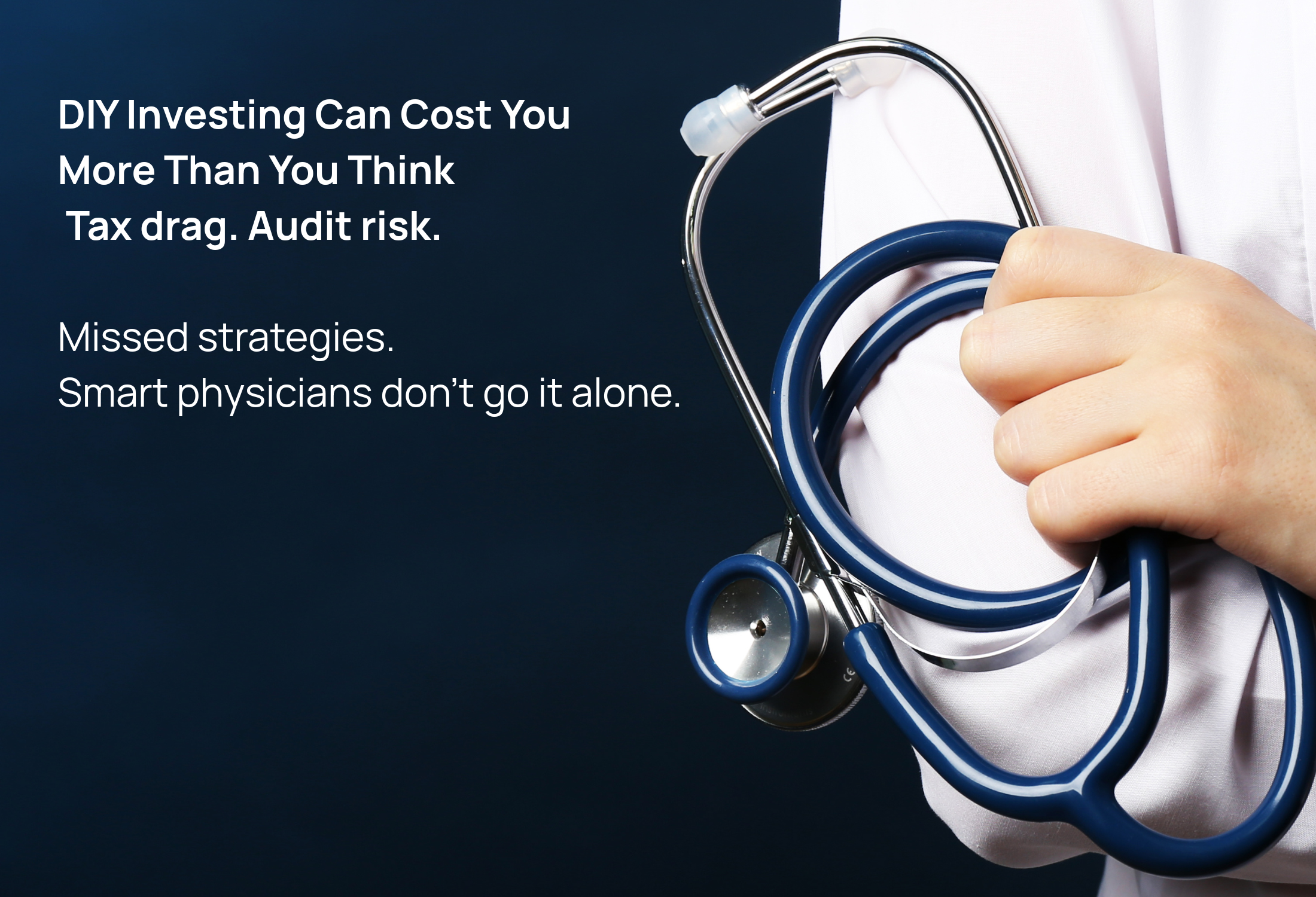
Self-directed investing promises simplicity: sleek apps, low fees, and the intoxicating thrill of calling your own financial shots. For high-performing professionals like physicians, the independence is appealing. But beneath the surface of those savings lies a quiet storm—one that slowly erodes wealth through overlooked tax traps, missed planning opportunities, and human error.
At Imperial Lifestyle Management, we’ve seen this story unfold too often. This blog is a cautionary tale for the medical professional who’s navigating the financial world alone.
- The Slow Burn of Tax Drag
You wouldn’t leave money on the table in your clinic—so why let it slip away in your portfolio?
Interest income in a taxable account can erode returns by 2–3% annually for high earners. Over 20 years, that seemingly small inefficiency could cost you over $180,000 on a $250,000 portfolio. Tax-loss harvesting, marginal tax rate spikes from RRSP withdrawals, and improper asset location all contribute to a drag that compounds quietly in the background.
- The Hidden Risk of Reporting Errors
Miss filing a CRA T1135 form for foreign holdings over $100,000? That’s a $2,500 fine per year, even with no taxes owed. Misreport U.S. dividends or ignore exchange rates for capital gains? You could trigger audits, penalties, and headaches.
DIY investors often underestimate how complex Canadian tax rules become once cross-border investments or corporate income enter the picture. Precision matters—and it’s often lacking without a second set of eyes.
- Probate Pitfalls & Estate Planning Oversights
For incorporated physicians, estate planning extends far beyond a will. Missed beneficiary designations, inefficient share structures, or passive income thresholds inside your corporation can derail your legacy—and cost your heirs dearly.
Probate fees, tax inefficiencies, and legal delays can all be mitigated with integrated planning. But without it, your estate may be vulnerable to exactly what you tried to avoid: waste.
- Misaligned Timing Can Derail Real-Life Goals
Are you investing your down payment in the stock market six months before buying a home? Holding large sums in cash out of fear? Timing errors aren’t poor investing—they’re poor planning.
These strategic mistakes can delay home ownership, reduce compounding, and undermine confidence in your financial future.
- Your Biggest Risk? Behavioural Biases
It’s not markets that ruin most portfolios—it’s people. Research consistently shows that DIY investors underperform by 3–4% annually due to panic selling, market chasing, and reactionary behavior.
That gap adds up. On a $250,000 portfolio, it could mean a $479,000 shortfall over 25 years—not due to bad investments, but bad habits.
- The Opportunities You Never Knew You Missed
Self-investors often miss advanced planning strategies because they simply don’t know what’s available:
- Prescribed rate loans for income splitting
- IPPs and RCAs for tax-efficient corporate retirement
- Pension income splitting post-65
- Business exit coordination and real estate structuring
Without these, you’re potentially leaving five or six figures on the table. A solid financial strategy isn’t just about what you invest in—but how you coordinate your entire financial life.
The Final Word
This isn’t about fear—it’s about foresight. You don’t need to relinquish control to benefit from expert guidance. Hybrid models exist. Second opinions cost little but can save much. The difference between a good financial life and a great one often lies in details invisible to the DIY lens.
Book a Consultation
Thinking about managing your portfolio alone? Let’s talk before you do. Imperial Lifestyle Management specializes in working with physicians like you. We’ll help you align your financial strategy with your career, your taxes, and your legacy. Book your consultation now and avoid becoming the cautionary tale.




Stay In Touch